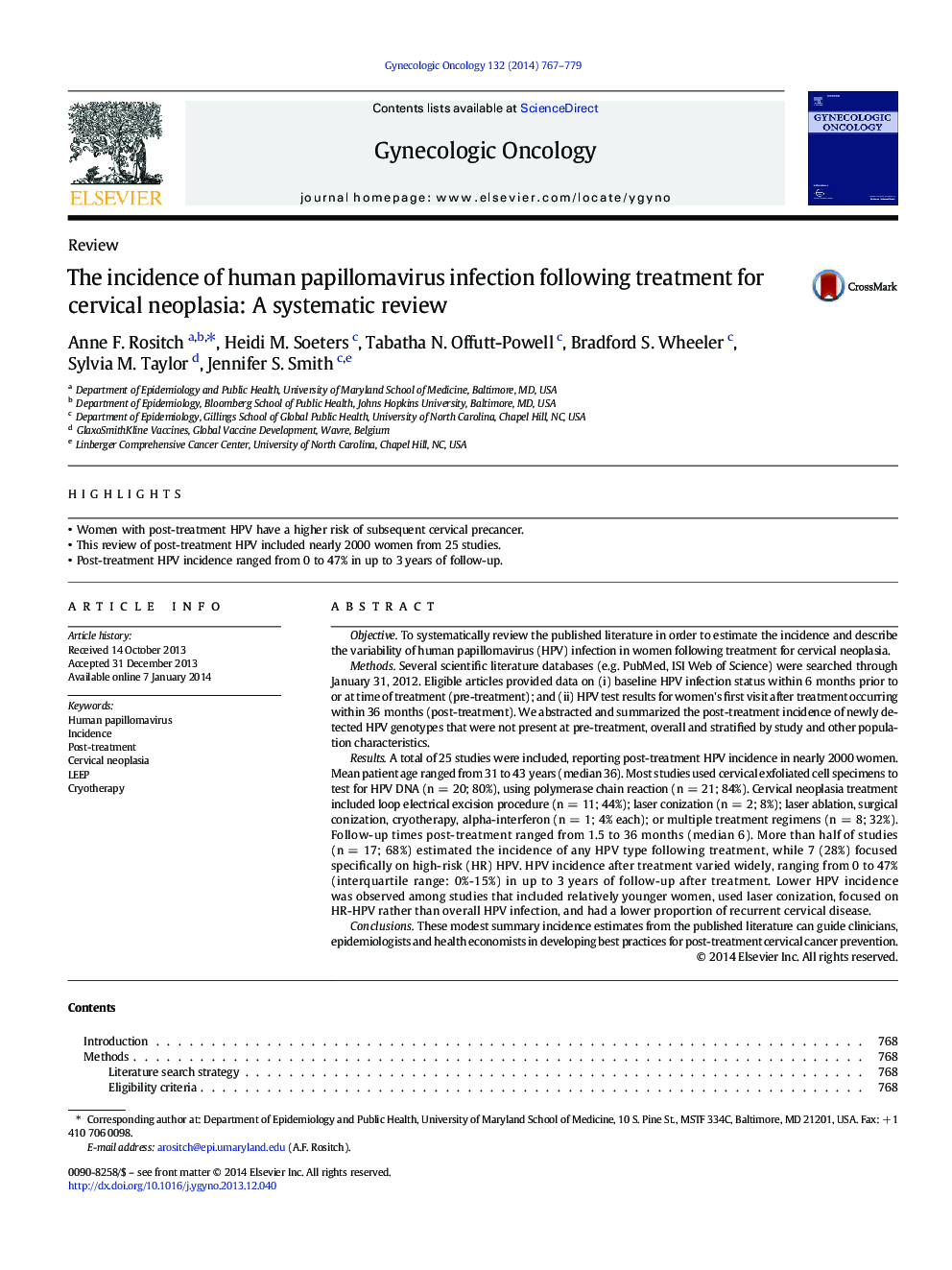| کد مقاله | کد نشریه | سال انتشار | مقاله انگلیسی | نسخه تمام متن |
|---|---|---|---|---|
| 6182871 | 1254037 | 2014 | 13 صفحه PDF | دانلود رایگان |
- Women with post-treatment HPV have a higher risk of subsequent cervical precancer.
- This review of post-treatment HPV included nearly 2000 women from 25 studies.
- Post-treatment HPV incidence ranged from 0 to 47% in up to 3Â years of follow-up.
ObjectiveTo systematically review the published literature in order to estimate the incidence and describe the variability of human papillomavirus (HPV) infection in women following treatment for cervical neoplasia.MethodsSeveral scientific literature databases (e.g. PubMed, ISI Web of Science) were searched through January 31, 2012. Eligible articles provided data on (i) baseline HPV infection status within 6 months prior to or at time of treatment (pre-treatment); and (ii) HPV test results for women's first visit after treatment occurring within 36 months (post-treatment). We abstracted and summarized the post-treatment incidence of newly detected HPV genotypes that were not present at pre-treatment, overall and stratified by study and other population characteristics.ResultsA total of 25 studies were included, reporting post-treatment HPV incidence in nearly 2000 women. Mean patient age ranged from 31 to 43 years (median 36). Most studies used cervical exfoliated cell specimens to test for HPV DNA (n = 20; 80%), using polymerase chain reaction (n = 21; 84%). Cervical neoplasia treatment included loop electrical excision procedure (n = 11; 44%); laser conization (n = 2; 8%); laser ablation, surgical conization, cryotherapy, alpha-interferon (n = 1; 4% each); or multiple treatment regimens (n = 8; 32%). Follow-up times post-treatment ranged from 1.5 to 36 months (median 6). More than half of studies (n = 17; 68%) estimated the incidence of any HPV type following treatment, while 7 (28%) focused specifically on high-risk (HR) HPV. HPV incidence after treatment varied widely, ranging from 0 to 47% (interquartile range: 0%-15%) in up to 3 years of follow-up after treatment. Lower HPV incidence was observed among studies that included relatively younger women, used laser conization, focused on HR-HPV rather than overall HPV infection, and had a lower proportion of recurrent cervical disease.ConclusionsThese modest summary incidence estimates from the published literature can guide clinicians, epidemiologists and health economists in developing best practices for post-treatment cervical cancer prevention.
Journal: Gynecologic Oncology - Volume 132, Issue 3, March 2014, Pages 767-779
